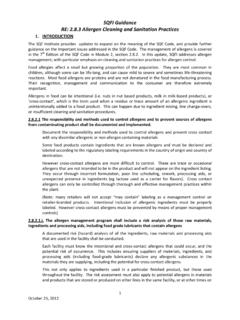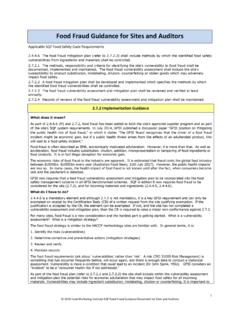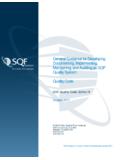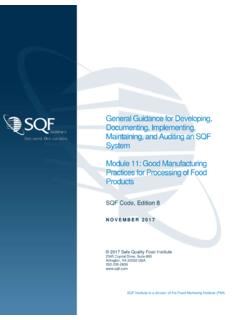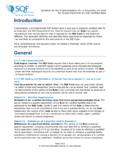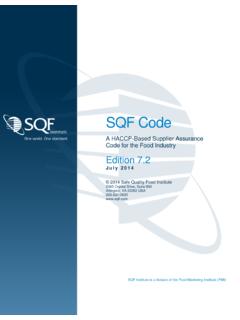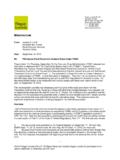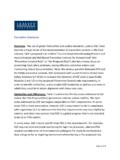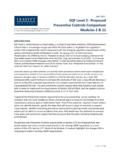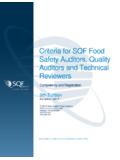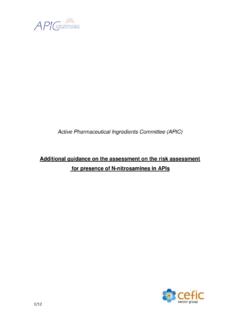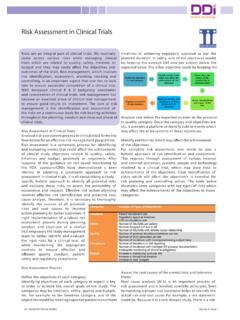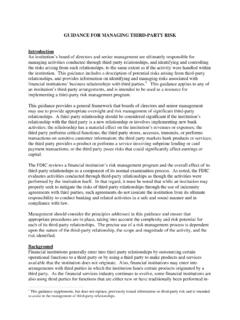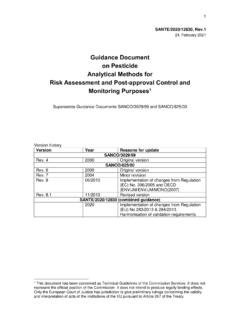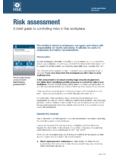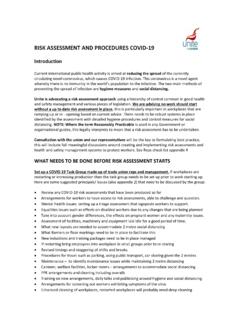Transcription of Edition 9 Guidance Document Risk Assessments in Pre
1 Risk Assessments in Pre-requisite Programs Edition 9 Guidance Document April 2021 Copyright 2021 FMI | 1 Risk Assessments in Pre-requisite Programs Definition Risk assessment is the identification, evaluation, and estimation of the levels of risk involved in a process to determine an appropriate control Code Requirements 1. 2. 3. 4. 5. 6. Review Glossary Terms 1. Pre-requisite 2. Risk assessment Implementation & Audit Guidance What does it mean? A risk assessment is a specific requirement in food safety codes where the SQF practitioner or delegated resources perform a structured approach to identifying, evaluating, and estimating levels of risk to hazards that might be present or reasonably likely to occur in the process.
2 Why is it in the Code & why is it important? Risk Assessments are the backbone to any functioning food safety management system. They are inherently part of many of the system elements of SQF. Specifically, the food safety plan, environmental monitoring program, food defense, food fraud and allergen management program all employ the use of risk Assessments in determine if hazards of concern need control. The structure and approach to complete these risk Assessments are usually prescribed by other sources of authority such as Codex Alimentarius or regulatory authorities. Where there might be risk in other aspects of the food safety management system, namely the pre-requisite programs, a risk-analysis or risk assessment is specifically asked for and may or may not be related to certain circumstances.
3 The site should have a prescribed process for completing and documenting a risk assessment . The following 3 step process is recommended: 1. Identification of hazards at any location or process step. Similar to how a hazard analysis is completed within the food safety plan the site should consider any biological, chemical or physical hazards that could occur and importantly what can cause them. Using descriptions from preventive control methodology hazards that are reasonably likely to occur in the absence of controls should be considered. 2. Evaluate each hazard and how it might occur to determine if there are any controls that are being applied or can be applied to eliminate or reduce the hazard to acceptable levels.
4 This evaluate is crucial so that risk can be assessed in the next step. 3. Estimate the risk of the hazards using a likelihood vs severity assessment or similar type of tool. The definitions for each level of likelihood and severity will be important so that it can be consistently applied. A measurement tool should be applied so that the output can definitively indicate risk level and thereby any appropriate control. Risk Assessments in Pre-requisite Programs Edition 9 Guidance Document April 2021 Copyright 2021 FMI | 2 RIO Road to Audits (Records, Interviews, and Observations) Records Interviews Observations The following are examples of records and/or documents to assist in the implementation and review of this topic: Risk Analysis/ assessment Hazard Control Records The following are examples of people to interview to assist in the implementation and review of this topic: SQF Practitioner Risk Assessors Operations Personnel The following are examples of questions to ask to assist in the implementation and review of this topic.
5 How were the risk factors determined and defined? What other team members were involved in the process and how were they trained? Describe the role of the individuals conducting the risk Assessments . What controls are applied to reduce risk? The following are examples of observations to assist in the implementation and review of this topic: Activities or process step associated with assessment Additional References Risk Assessments Presentation Deck November 2018: SQFI Risk assessment Approach
